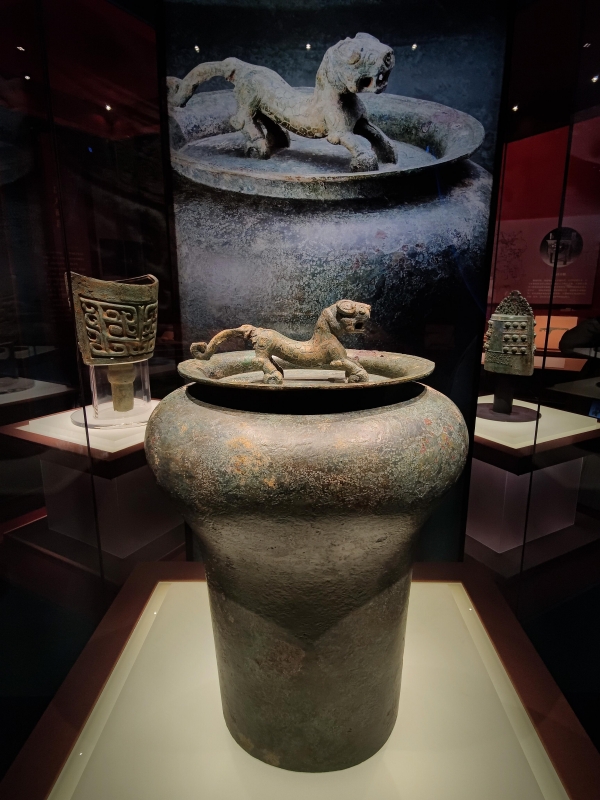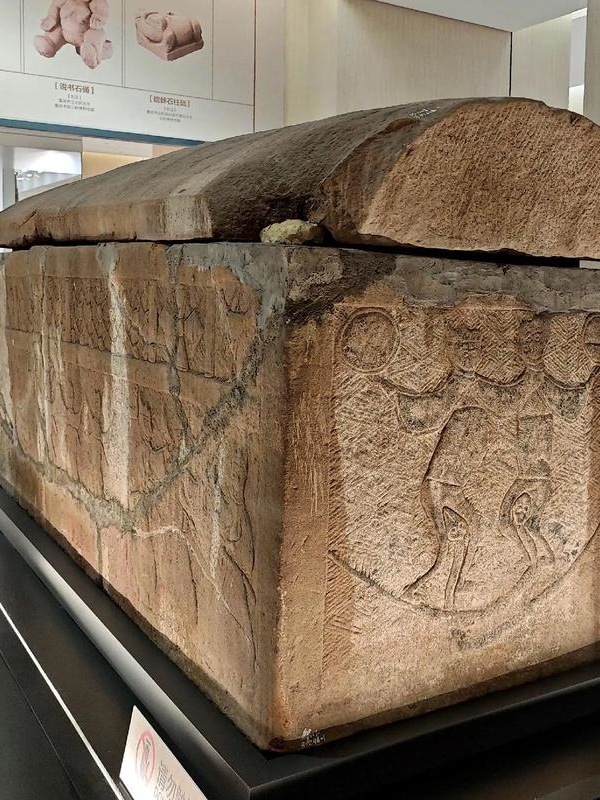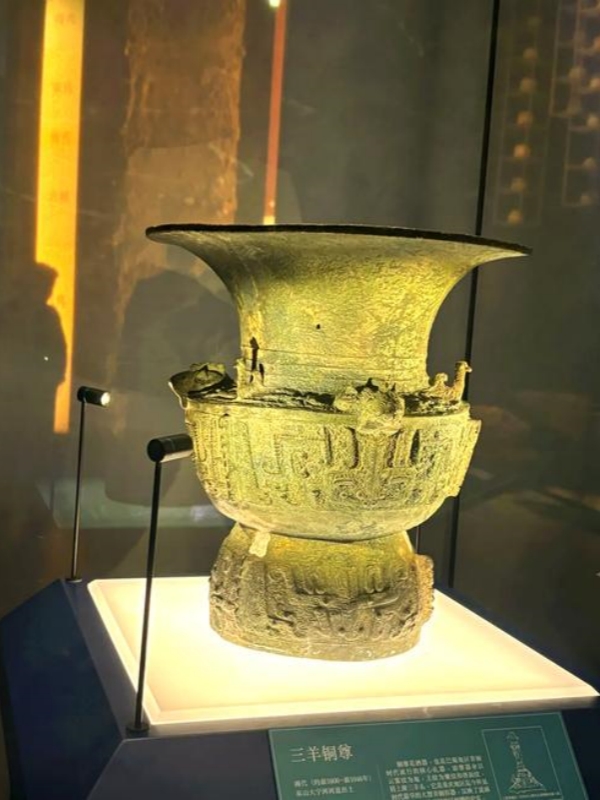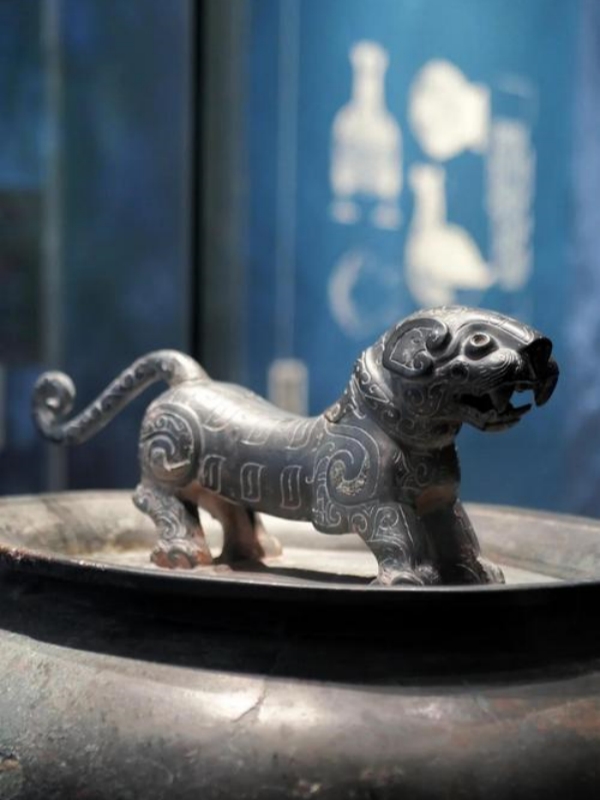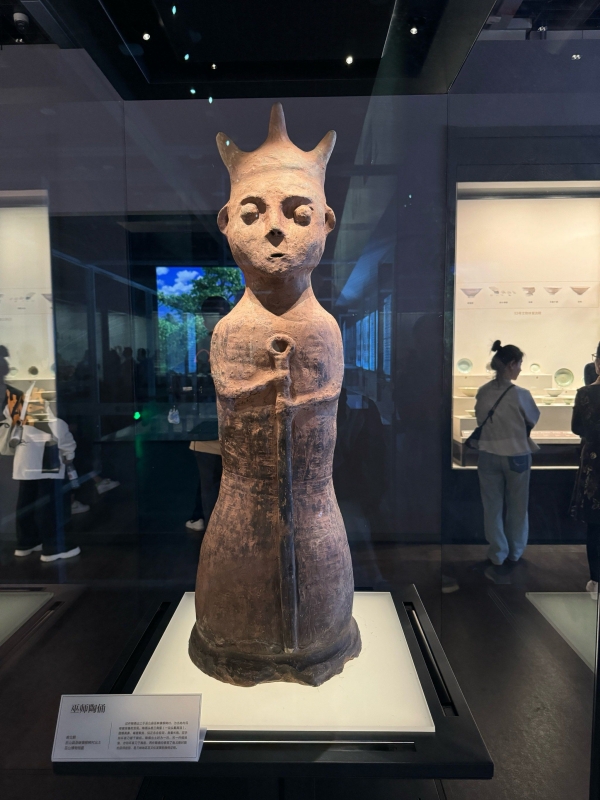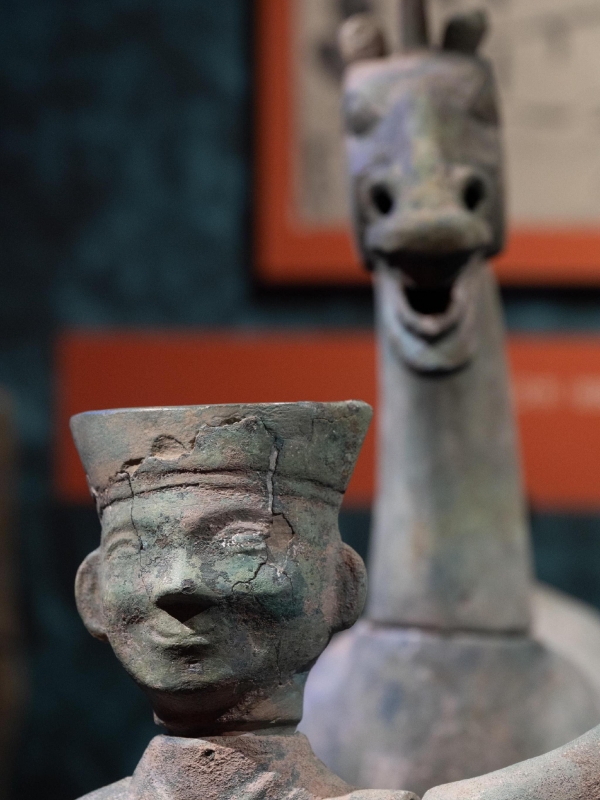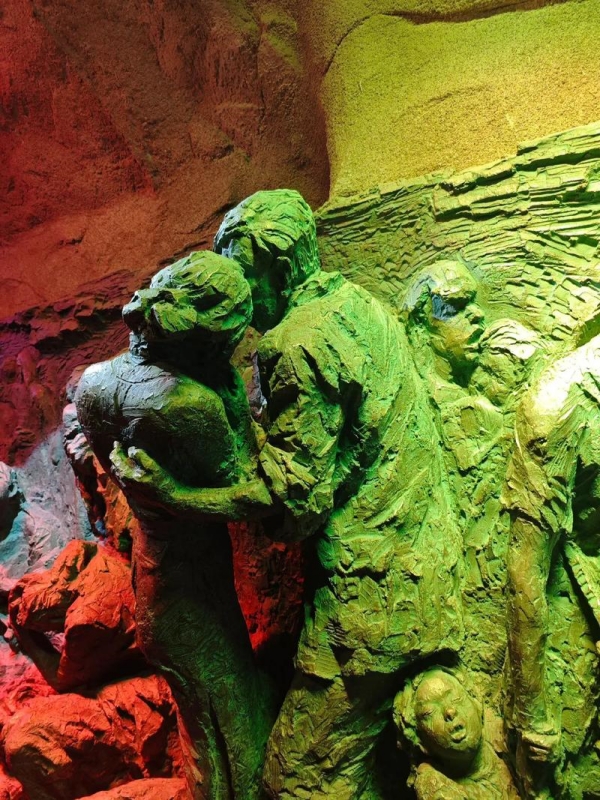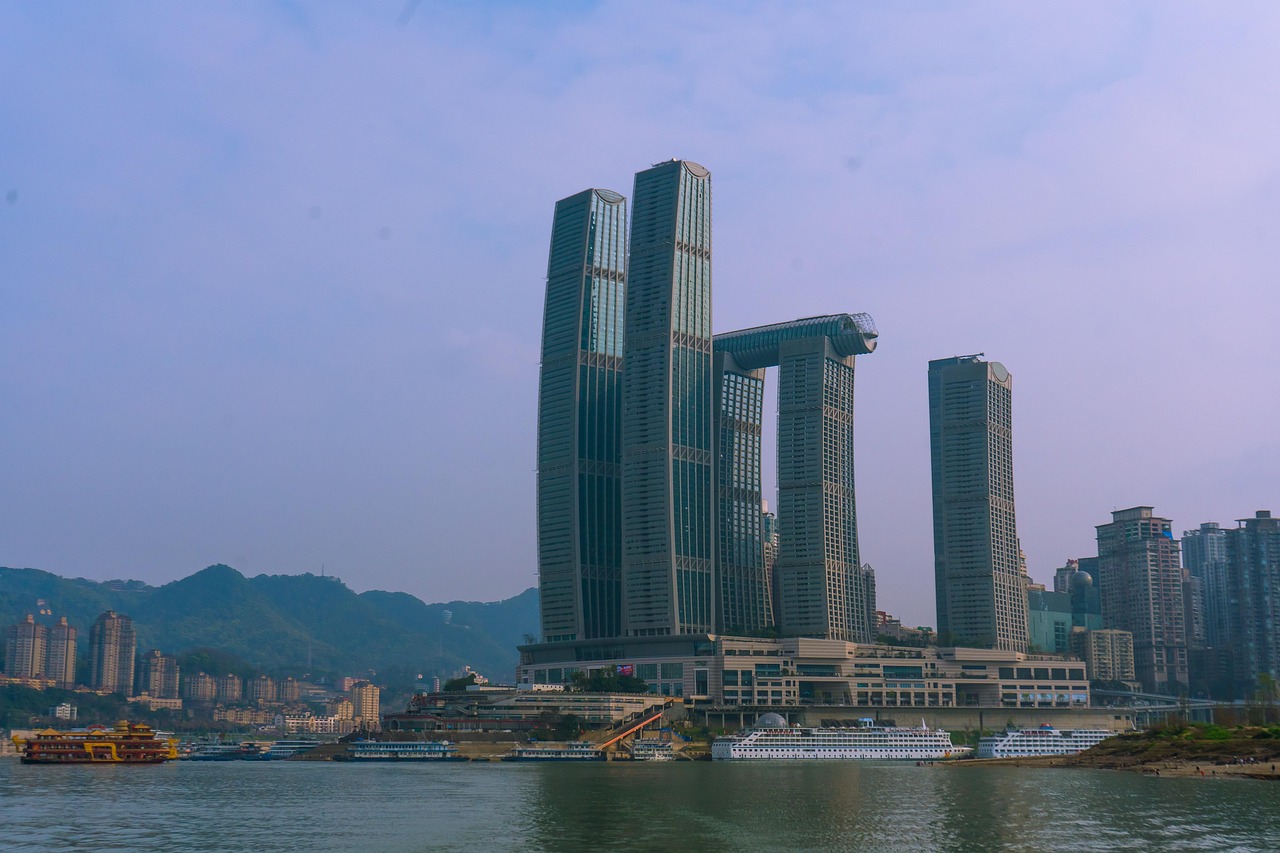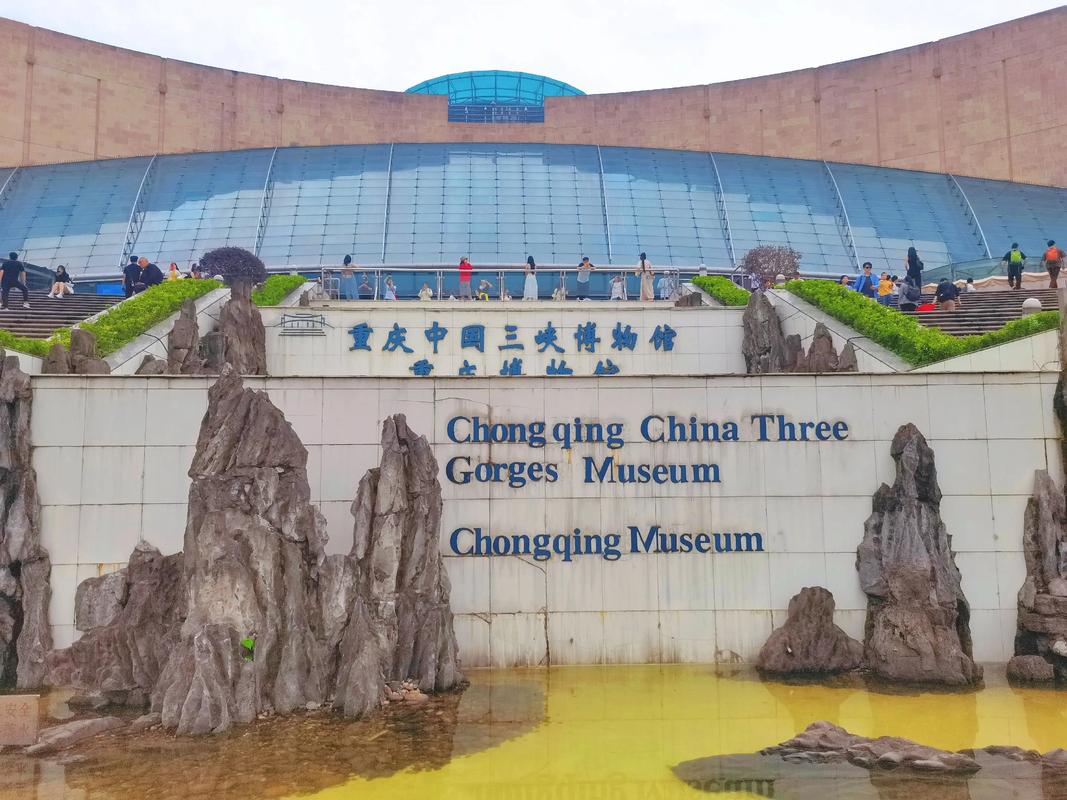
Chongqing China Three Gorges Museum
Nestled in Chongqing's Yuzhong District, right across from the iconic People's Square and People's Assembly Hall, the Three Gorges Museum often flies under the radar due to its unassuming concrete exterior. Yet this cultural institution is far from ordinary—it houses a trove of unique artifacts that can't be found in more famous museums, seamlessly spanning millennia of regional history from the ancient Ba people's civilization to the modern legacy of the Three Gorges Dam.
Unlike grander museums that rely on spectacle, the Three Gorges Museum excels at weaving intimate, impactful narratives, making it a must-visit for anyone seeking to understand southwest China's soul—even if it doesn't draw crowds like Xi'an's Terracotta Warriors. Now that you know how valuable this place is, this guide is your ultimate "insider's handbook" to unlock all its treasures! Whether you're a history buff with plenty of time to linger or a casual traveler short on schedule, you'll find a perfect itinerary here.
Quick Info of Three Gorges Museum
| Category | Details |
| Admission | FREE (No reservation required since October 1, 2025—simply show valid ID) |
| Hours | 9:00 AM - 5:00 PM daily (Last entry 4:00 PM) |
| Closed | Mondays (except national holidays) |
| Location | 236 Renmin Road, directly opposite People's Assembly Hall |
| Metro | Line 2 to Zengjiayan Station, 3-minute walk |
| Time Needed | 1.5 hours (quick) to 4+ hours (thorough) |
| Museum Complex | Main building is part of a larger system including: Baiheliang Underwater Museum, Song Qingling Memorial Hall, Tushan Kiln Site, and the Three Gorges Cultural Relics Conservation Center |
Understanding the Museum's Masterpieces: 4 Must-See Treasures
Before visiting the galleries, know these four significant treasures. They define the museum's world-class status. These artifacts anchor Chongqing's story from ancient civilization to imperial China.
The Wuyang Han Que (乌杨汉阙): This Han Dynasty stone gate symbolizes the museum. It is the only regional que retaining its subsidiary structure. This architecture represents ancient memorial construction at its peak.
The Warring States Tiger-Button Chunyu (战国虎钮錞于): This 30-kilogram bronze military drum is the "King of Chunyu." The tiger handle shows the Ba people's tiger worship. Ancient armies used it to boost morale.
The Pian Jiangjun Golden Seal (偏将军金印): This Eastern Han gold seal is exceptionally rare. High gold content and preservation make its value immeasurable. Han gold seals are China's most precious artifacts.
The Warring States Bird-Shaped Zun (战国鸟形尊): This bronze vessel shows the Ba people's unique aesthetic. Its distinctive bird form represents artistic excellence. It confirms their mastery of sophisticated casting.
Rivaling the Three Gorges Museum in reputation is the unforgettable Chongqing Art Museum, inviting you to experience its bold Chopstick Building architecture and lose yourself in its world of creativity.
Ancient Ba-Yu Civilization Gallery: Where Chongqing's Story Begins
- Boat-shaped Coffin
- Bronze Display
- Tiger-shaped Belt Hooks
Step into this gallery, and you're immediately transported 3,000 years back in time. The dimmed lighting creates an almost sacred atmosphere as you approach the centerpiece: a massive boat-shaped coffin suspended in mid-air. This isn't just any burial vessel—it's a window into the mysterious Ba people who called this region home during the Bronze Age.
What struck me most wasn't the size of the artifacts, but the intricate details. Look closely at the bronze weapons displayed in the climate-controlled cases. The tiger-shaped belt hooks, fierce and elegant, tell you everything about Ba culture in one glance: these were warriors who valued both strength and artistry. The museum labels mention these date back to the Stone Age and Bronze Age transitions, but what they don't emphasize enough is how unique this civilization was. While northern China was developing under Zhou Dynasty influence, the Ba people were creating their own distinct cultural identity in these mountains.
Don't rush through this section. I recommend spending at least 45 minutes here, especially around the boat coffin burial reconstruction. The multimedia display explains how archaeologists discovered these coffins hanging on cliff faces—a burial practice found nowhere else in ancient China. Photography is allowed (no flash), and the best angle is from the second-floor viewing platform where you can capture the full boat coffin with the relief map of ancient Ba territory in the background.
Insider tip: Most tour groups speed through here to get to the Three Gorges section. Arrive right when the museum opens at 9:00 AM, and you'll have this entire ancient civilization gallery almost to yourself. The morning light through the high windows creates a dramatic effect on the bronze displays.
Not only does the Three Gorges Museum carry the long river of history, but you can also feel Chengdu’s living cultural pulse by exploring Sichuan Museum offers more than a glimpse of the past—it’s also a window into the living rhythm and cultural depth of Chengdu today.
Han Dynasty Artifact Collection: 2,000-Year-Old Artistry
- Pottery Figurines
- Pottery Figurines
- Guozigou Bridge
The Han Dynasty (206 BCE - 220 CE) marked a golden age of Chinese civilization, and Chongqing's location on the Yangtze River made it a crucial trading hub. The artifacts here reflect that prosperity and cultural sophistication. The painted pottery figurines alone are worth the visit—unlike the famous Terracotta Warriors in Xi'an (which are larger but uniformly stern), these Han Dynasty figurines show everyday people in naturalistic poses. Musicians playing instruments, servants carrying food, dancers mid-performance. Each face has individual expression, capturing a humanity that bridges two millennia.
But spend time with the smaller objects too. The bronze mirrors, decorated with intricate cosmological patterns, reveal Han Dynasty understanding of astronomy and philosophy. The jade burial suit pieces (just fragments here, not a complete suit like in some museums) demonstrate the extraordinary value placed on immortality and the afterlife. There's a stunning set of lacquerware that somehow survived 2,000 years underground, the red and black patterns still vivid.
Allocate 45-50 minutes for this section if you're genuinely interested in ancient history. The museum provides detailed English labels here, and there's usually a free volunteer guide stationed in this gallery who can provide additional context (Chinese language, but they often use translation apps to communicate with international visitors).
Porcelain & Calligraphy Gallery: Artistic Refinement Through Dynasties
- Qing Porcelain
- Three-legged Incense Burner
- Calligraphy
Honestly? If you're running short on time and not particularly into Chinese classical art, you can skip this gallery without major regret. But if you appreciate the finer points of ceramic artistry and Chinese calligraphy, this is a quiet oasis away from the crowds.
The porcelain collection traces the evolution of Chinese ceramics from Tang Dynasty simplicity through Song Dynasty refinement to Ming and Qing Dynasty elaboration. The Song Dynasty pieces are my personal favorites—those celadon glazes with their subtle, jade-like colors represent a philosophy of understated elegance that influenced Asian aesthetics for centuries. There's a particular Ru ware bowl (one of the rarest types of Song porcelain) that makes ceramics experts weak in the knees, though to untrained eyes it might look like "just a plain greenish bowl."
The calligraphy scrolls are beautifully preserved but require cultural context to fully appreciate. Unless you can read classical Chinese or have a strong interest in brushwork styles, you might find this section less engaging than others. The museum does provide English explanations of the historical significance and artistic techniques, which helps.
The gallery has comfortable benches—I've seen visitors use this quiet space as a rest spot between the busier exhibitions, which is a perfectly legitimate use of your museum time. Stepping away from the porcelain-and-calligraphy elegance of the Three Gorges Museum, you can dive even deeper into China’s artistic lineage through Guangzhou Museum of Art 2025: Discover Lingnan Heritage, Global Exhibition.
Anti-Japanese War Gallery: When Chongqing Was China's Wartime Capital
- Anti-Japanese War Gallery
- Air Raid Shelter
- Scene Recreation
Few foreign visitors realize that from 1937 to 1945, Chongqing wasn't just another Chinese city—it was the wartime capital of the entire Republic of China. This gallery tells that harrowing and heroic story through a carefully curated collection that goes beyond typical war museum displays.
The reconstructed air raid shelter hits you first. The museum recreated a section of the underground tunnels where Chongqing residents hid during Japanese bombing raids—over 5,000 raids between 1938 and 1943, making this one of the most bombed cities in WWII history. Walk through the narrow, claustrophobic passageway, and the ambient sound design plays air raid sirens and distant explosions. It's uncomfortably effective. The walls display photographs of residents emerging from shelters to find their neighborhoods reduced to rubble, yet rebuilding again and again.
What sets this 20th-century history section apart is its international dimension. The Flying Tigers exhibit showcases American volunteer pilots who defended Chongqing's skies, complete with a restored P-40 fighter plane nose section (great for photos).
Why this matters to modern Chongqing: Understanding this wartime capital period explains so much about the city's character—its resilience, its industrial base, its status as a direct-controlled municipality. Locals take immense pride in this history, and referencing it is a great conversation starter if you're interacting with Chongqing residents.
Give yourself 35-40 minutes for this gallery. The documentary film screening (15 minutes, English subtitles available) runs every hour and provides excellent context. The best photos are in the mock-up street scene showing 1940s Chongqing daily life—complete with period-appropriate storefronts and propaganda posters.
Three Gorges Heritage Hall: What Was Saved From the Rising Waters
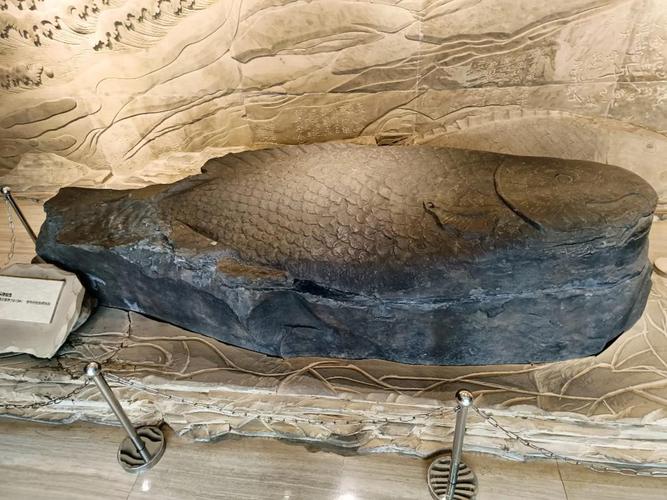
The Baiheliang Underwater Stone Inscription
This is where you'll understand why this museum exists. Between 1992 and 2003, as the Three Gorges Dam slowly filled the reservoir, archaeologists raced against time to rescue cultural relics from 1,300 historical sites that would soon be underwater. What you see in this hall represents the most significant finds from that massive salvage operation.
The Baiheliang Underwater Stone Inscription is the crown jewel here—or rather, detailed replicas of it, since the original now sits 40 meters below the Yangtze River surface in a specially built underwater museum. These carvings, dating back to the Tang Dynasty, recorded water levels for over 1,200 years, making them the world's oldest hydrological station. Stand in front of the life-size reproduction, and you can trace the carved fish and inscriptions with your eyes, imagining scholars doing the same thing centuries ago on the exposed riverbank.
But it's the everyday objects that hit differently. The Han Dynasty pottery jars, still bearing traces of ancient grains. The stone lions that once guarded temple entrances in villages that no longer exist. A farmer's tools from the Ming Dynasty. Each artifact carries a weight beyond its historical value—it's a piece of a world that was erased to make way for modernity. I watched a elderly Chinese visitor tear up in front of a photograph showing her hometown before the flooding. The museum does an excellent job of balancing the engineering achievement of the dam with the cultural cost.
Plan for at least 40 minutes here. The interactive digital map showing before-and-after flooding is particularly powerful—locate your cruise route and see how the water level changed the landscape.
Hidden Gems & Local Insider Tips Most Guides Won't Tell You
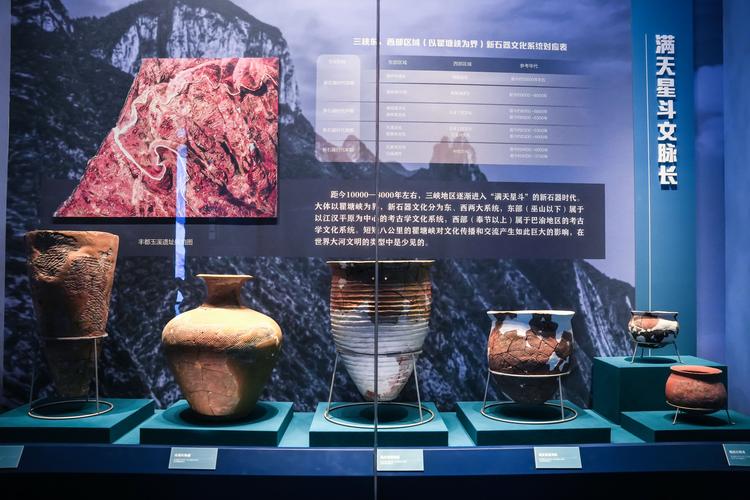
Temporary Exhibition
The Free Guided Tour Hack
At 10:00 AM and 2:30 PM daily, free volunteer-led tours depart from the main entrance (in Chinese, but some volunteers use translation apps). Here's what guidebooks don't tell you: these volunteers are often retired university professors or former museum staff who share stories not on the official placards.
Sign up at the information desk 15 minutes before tour time. If you're lucky enough to get Professor Chen (an elderly gentleman in his 70s), you've hit the jackpot—he worked on the Three Gorges archaeological salvage and has personal stories about specific artifacts.
The Secret Photo Spot
Third floor, northwest corner, near the stairwell to the temporary exhibition space. There's a floor-to-ceiling window that perfectly frames both the museum's interior atrium AND the blue dome of the People's Assembly Hall outside. This angle appears in zero tourist photos because it's not obvious—you have to walk past the bathrooms to find it.
Best time for this shot: 2:00-3:00 PM when afternoon light hits the Assembly Hall dome. Use portrait mode on your phone to get that Instagram-worthy depth effect.
The Temporary Exhibition Secret
The museum rotates special exhibitions every 3-4 months in the fourth-floor gallery. These are often exceptional—I've seen Song Dynasty painting exhibitions and contemporary photography shows that would charge ¥60+ at other museums. Here? Included free with your museum admission.
Check the official website or WeChat account before visiting to see if there's a special exhibition during your dates. Sometimes these temporary shows are better than the permanent collection.
Practical Tips of Three Gorges Museum Chongqing
Opening Hours & Best Times to Visit
Regular Schedule:
| Category | Details |
| Hours | 9:00 AM - 5:00 PM |
| Last Entry | 4:00 PM |
| Closed | Mondays (except national holidays) |
My honest recommendation: Plan for 2.5 hours on a Tuesday or Wednesday morning, arriving exactly at 9:00 AM. This gives you time to see everything important without feeling rushed, and you'll avoid the tour group invasion that starts around 10:30 AM.
Tickets & Reservation: It's Free, But You Must Book Ahead
Appointment Platform: Reservations must be made through officially designated online channels. The most convenient way is via the WeChat Official Account “重庆中国三峡博物馆” (Chongqing China Three Gorges Museum) or its Mini Program.
Reservation Time: You can make appointments 1 to 7 days in advance (including the current day). When planning your itinerary, be sure to avoid Mondays.
Information Required: When booking, select the document type as “Passport” and accurately fill in your passport number. One WeChat account can book for multiple people.
Important Note from the latest museum guide (as of October 2025): The museum has eliminated the advance reservation requirement. You no longer need to book via WeChat; simply arrive during operating hours with your valid passport for immediate, free entry.
How to Get There: Your Complete Transportation Guide
The Three Gorges Museum sits in Chongqing's Yuzhong District, directly opposite the People's Assembly Hall. The good news: it's extremely accessible by public transportation. The bad news: Chongqing's crazy topography means even "nearby" Metro stations involve some walking.
| Option | Key Route/Stops | Estimated Time/Cost | Recommendation/Notes |
| Metro (BEST) | Line 2 rightarrow Zengjiayan Station (曾家岩站) | 3-4 min walk (280m) from Exit 1 | Easiest & Most Reliable. Walk is mostly flat. Connects directly to Chongqing North Railway Station and Airport Express. |
| Metro (Alt.) | Line 3 rightarrow Niujiaotuo Station (牛角沱站) | 8-10 min walk (550m) from Exit 4 | Only use if Line 3 is more convenient. Warning: Includes stairs due to the terrain. |
| Bus | Stops at "Three Gorges Museum" (三峡博物馆站) | Varies | Use only if staying very close (2-3 stops). English announcements may be unclear for first-timers. |
| Taxi / Didi | Show driver: 请带我去三峡博物馆 | From Jiefangbei: ¥15-20 (8 min) | Convenient and quick for short distances. Use "重庆中国三峡博物馆" in the Didi app. |
| From Airport: ¥60-80 (45 min) | |||
| Parking | Underground garage beneath People's Square | ¥6/hour, ¥40 daily max | NOT RECOMMENDED. High hassle factor, confusing maze, often full on weekends/holidays. |
FAQs: Your Three Gorges Museum Questions Answered
Q. Is the Three Gorges Museum Worth Visiting?
The three gorges museum is worth visiting for most travelers because it offers clear insight into regional history and the dam’s cultural impact. The visit is free and easy to plan. You can explore rare artifacts, strong narratives, and thoughtful exhibits that deepen your view of southwest China. Travelers with limited time may skip it, but history lovers will enjoy every minute. Expect a calm space focused on culture rather than spectacle.
Q. How Much Does It Cost to Go to the Three Gorges Museum?
The three gorges museum costs nothing to enter, which makes it one of the best-value cultural sites in China. You only need a free online reservation and your passport. Most visitors spend small amounts on transport and optional audio guides. Expect low overall costs for a high-quality experience. The museum stays free due to national cultural policy, giving travelers a great chance to learn with minimal expense.
Q. Can I Visit the Three Gorges Museum Without Speaking Chinese?
You can visit the three gorges museum without speaking Chinese, and the experience stays smooth with simple preparation. Many labels include English, and an English audio guide fills the gaps. Staff use translation apps when needed. Offline translation tools help with deeper context. The museum layout is intuitive, and most exhibits are self-explanatory. With light planning, non‑Chinese speakers can enjoy a full and confident visit.
Q. Is Photography Allowed at the Three Gorges Museum?
Photography is allowed in most parts of the three gorges museum, but visitors must follow strict rules. Flash, tripods, selfie sticks, and professional lighting are banned to protect artifacts. Smartphone and handheld camera shots are fine, and short video clips work well. Some temporary exhibits restrict photos, and staff enforce rules clearly. Good lighting appears in morning and mid‑afternoon. With simple etiquette and awareness, travelers can capture great shots without causing disruption.
Q. How Long Should I Spend at the Three Gorges Museum?
Most travelers spend two to three hours at the three gorges museum for a balanced experience. Quick visits cover highlights but skip deeper context. A full visit includes major galleries, short films, and a short break. History fans may stay longer, while casual visitors enjoy a shorter route. The layout supports smooth movement between floors, making pacing easy. Your ideal duration depends on interest level, but two hours fits most schedules comfortably.
Q. Do I Need a Tour Guide at the Three Gorges Museum?
You do not need a guide at the three gorges museum, but guided options can add meaningful depth. Independent visits offer flexibility and low cost, while audio guides provide structured insight for a small fee. Volunteer tours give rich context but run in Chinese only. Private guides work well for families or visitors wanting personalized explanations. Most travelers enjoy a self‑guided visit, yet guided choices help uncover details that labels and casual browsing often miss.

